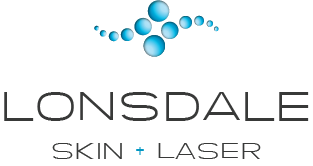
Which is more effective for hair removal: Diode laser or E-light?
The latest and most efficient hair removal technologies are Diode laser and E-light, yet few individuals comprehend the disparities between them. Read on to discover which technology is superior for laser hair removal.
Understanding E-light Technology
E-light technology is an advanced hair removal technique that merges two powerful technologies, Intense Pulsed Light (IPL) and Radio Frequency (RF).
IPL targets hair follicles by using a wide range of light spectrums between 650 nm and 1064 nm, destroying the hair roots and reducing hair growth. On the other hand, RF is a noninvasive method that heats the deep layers of the skin, promoting collagen production and rejuvenating skin cells.
When combined, E-light technology enhances hair reduction effects and provides additional skincare benefits such as tightening the skin, reducing pore size, and reducing wrinkles. Since E-light uses a broad spectrum of light, it is suitable for almost all skin and hair types. Additionally, new E-light machines are equipped with advanced cooling systems, making the treatment more comfortable and less painful than traditional IPL treatments.
E-light treatment has larger spots, which saves time when treating larger areas like the back, shoulders, abdomen, and legs.
Understanding Diode Laser Hair Removal
Diode laser hair removal is a procedure that utilises a single selective wavelength to target the melanin in the hair follicle.
Types of Diode Lasers
Diode laser machines differ in their wavelengths, which are measured in nanometers (nm), and are categorized as follows:
- Alexandrite (755 nm): recommended for pale skin types (I, II).
- Popular Diode laser (808 nm): effective for pale to medium skin types (II, III).
- Nd:YAG (1064 nm): recommended for olive skin types (IV) and dark skin types (V).
- Diode laser with 4 wavelengths (combination of 4 wavelengths: 755/808/940/1064 nm): effective for pale to dark skin.
All Diode lasers come with a reliable cooling system. However, the laser spot for Diode lasers is small, which means patients may require more time for their treatments.
Choosing between Diode Laser and E-light: Which is the Better Option?
- Understanding Wavelengths: Which is Better for Hair Removal – E-light or Diode Laser
Wavelengths play a crucial role in determining the effectiveness of hair removal treatments, whether using E-light or Diode Laser.
E-light has a broad spectrum of wavelengths from 650 to 1200 nm, which allows it to distribute energy evenly across all wavelengths. This makes it an effective option for most people since the hair follicles fall within this range.
Diode Laser, on the other hand, has four wavelengths of 755, 808, 940, and 1064 nm, and the energy is focused on these wavelengths depending on the selected mode of skin color. Diode Laser may be more effective than E-light if your hair follicles fall within these wavelengths. However, the treatment may be less effective if your hair follicles are outside these wavelengths. Nevertheless, the built-in wavelengths of Diode Laser machines are studied to be effective for most skin and hair types. - Treatment Frequency: Comparing E-light and Diode Laser
Both E-light and 4-wavelength diode laser effectively reduce hair for a wide range of skin and hair types, from fair to dark skin. With the 4-wavelength diode laser, the energy is focused on four wavelengths, making it more effective than E-light for hair follicles that fall within those wavelengths. Therefore, the number of treatments with diode laser can be less if your hair follicles are suitable for one of the four wavelengths.
However, if the 4-wavelength diode laser does not work for you, it means that your hair follicles are not in one of those four wavelengths, and you should consider using E-light technology.
Single-wavelength diode lasers require knowing which wavelength suits your skin and hair best. However, with the 4-wavelength diode laser, you don’t need to remember the suitable wavelength since it covers the most common wavelengths for most skin and hair types.



